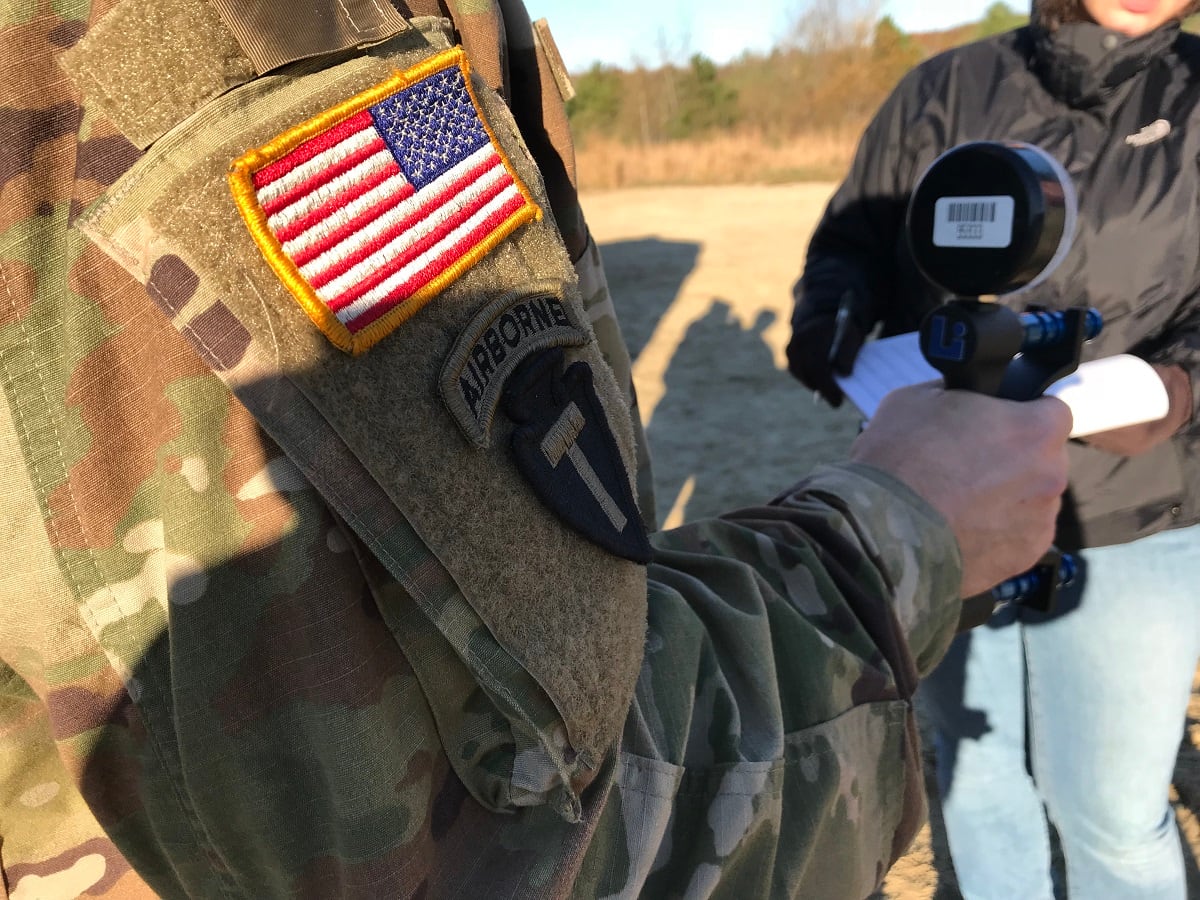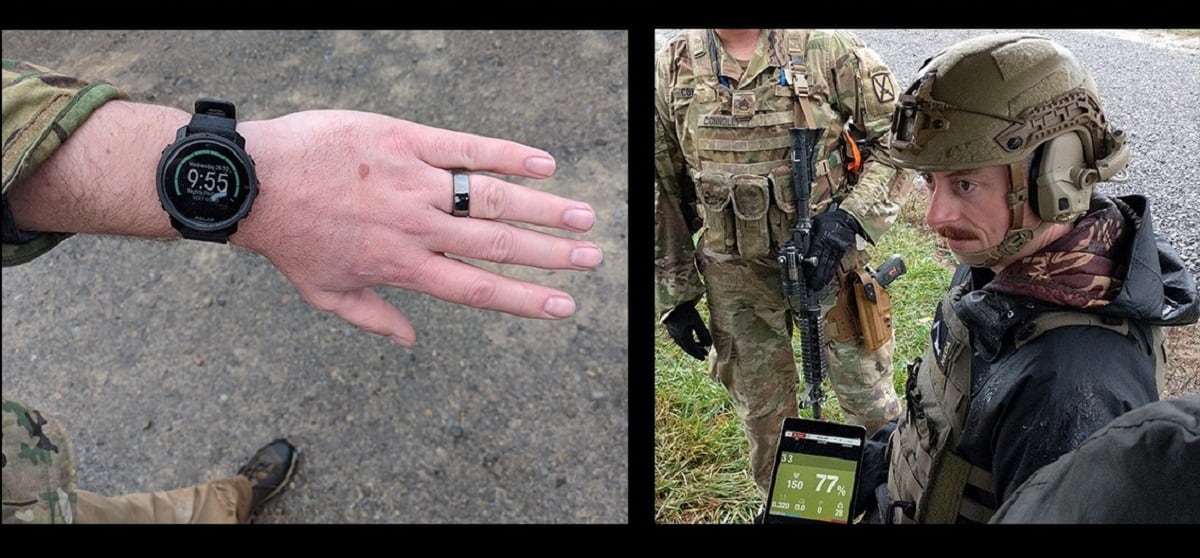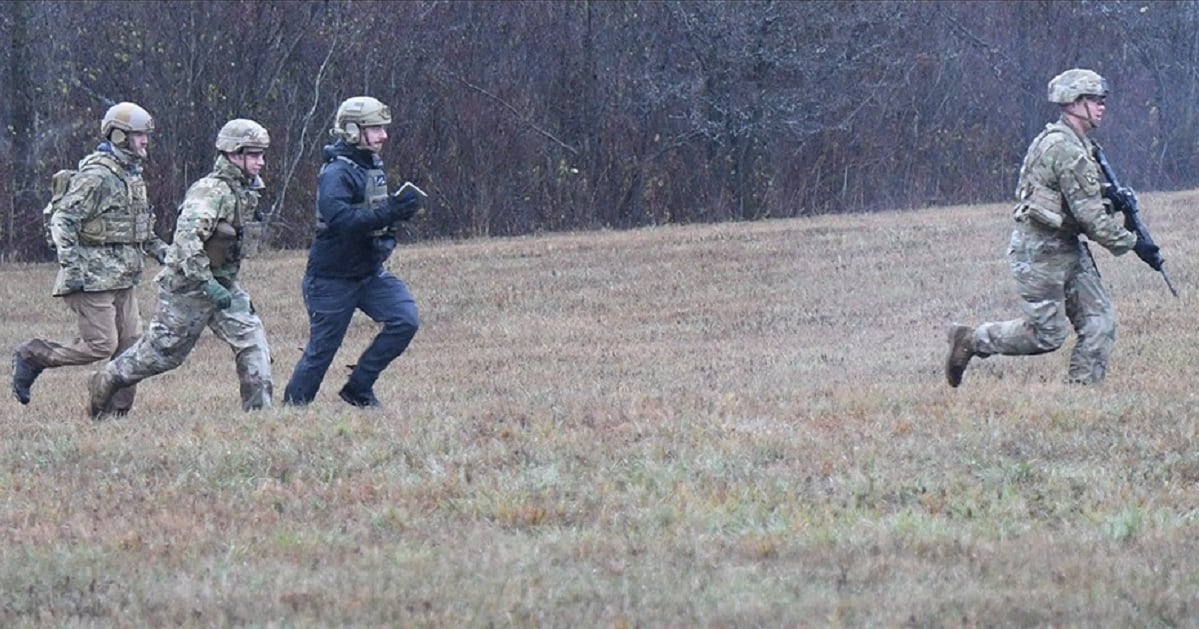The Army is matching up smartwatches, rings and data collection to help turn soldiers into measured athletes.
More than 530 soldiers from 4th Battalion, 31st Infantry Regiment, 2nd Brigade Combat Team, 10th Mountain Division, have been issued wearable technology at the start of a yearlong human performance study, according to an Army statement.
The program, whose pilot Army Times first reported on in 2018, is called MASTR-E, or Measuring and Advancing Soldier Tactical Readiness and Effectiveness.
The 10th Mountain soldiers ran through a 200-meter stress shoot recently, testing their speed, decision-making and accuracy under pressure. And that was just for training. Soldiers are not required but can wear the device off duty to track their exercise, sleep and other activities.
RELATED

“We have noticed they are wearing them on the weekends, which is great to see," said George Matook, MASTR-E program manager. “They’ll tag that they’re going on a hike, and that’ll create a workout profile on the watch and capture all that data.”
The program falls under the Army’s Combat Capabilities Development Command Soldier Center, which folds into an ongoing project to build a Soldier Squad Performance Research Institute, also called the S2PRINT facility at the CCDC’s center in Natick, Massachusetts.
An early version of MASTR-E was taken up by soldiers at Fort Bragg, N.C., in 2018, when paratroopers with the 2nd BN, 505th Parachute Infantry Regiment, 3rd BCT, took part in an initial study.
Researchers followed along with paratroopers through a 14-field study, taking 210 measurements, Army Times reported at the time.
They ran through a gamut of events, including pre-mission planning, mission execution and post-mission measuring.
That included a look at biomechanics, load carriage, performance nutrition, equipment use, injury reporting, navigation and recovery times, among other things. Cognitive performance was also tracked closely alongside the other biological markers, researchers said.

Those remain the focus of the more matured program now, Matook said in the recent statement.
“And if you can tie those basic things together, then you can get a picture of how they are training, how hard they are training, and (whether) they are training too much,” Matook said.
“Are they sleeping enough ahead of a training event — going into it already at a deficit — or are they really getting ready for an event?” he said. “This allows you to start managing movement and maneuver, and mission command, when they get out in the field.”
The devices track resting heart rate, body temperature changes, respiratory rate, sleep cycles and activity levels.
Beyond performance, analysts can track metrics for potential infection or illness, keeping a closer eye on the health of the soldier and the squad.
During the stress shoot course this past week, analysts were looking at both the biomarkers and the actual shooting performance in drills, said Joseph Patterson, the CCDC Soldier Center work package lead for MASTR-E.
“We are trying out a research methodology on tactical stress and decision making,” Patterson said in the release. “The Army believes in ‘Train as you fight,’ so we are trying to put Soldiers through this assessment course in the conditions in which they would fight the current fight and future fights as well.”
The combination of tracking parameters can also give soldiers insight into how they spend their down time and its effects on their performance.
“So, they can understand how certain life decisions — like playing video games until 2 in the morning — will then relate to actions on the objective,” Patterson said. “Or, if they have a healthy dinner, do foam rolling and have healthy modalities, then they can train better and have a better outcome.”
The 4th BN operations officer, Maj. Adam Cucchiara, said the new tech and its hard numbers have helped him gain better insight into soldier performance.
“This has helped us to quantify what is arguably pretty hard to quantify in terms of how we’re doing,” he said. “Now we can say, ‘this is exactly how well you slept last night,’ or ‘this is how fast you ran and here’s how your heart rate changed when presented with this tactical problem.’”
That goes as well for the internal stress a soldier has just before or after a training event. A soldier might seem cool and collected on the inside, but internally he or she is ramping up, and that shows in the metrics.
“Then we see how that may translate into decisions that they make, right off the bat,” Cucchiara said. “Now that we are able to quantify exactly what ‘better’ is, we can go back and see what we can do before we get to an event to make you better, make you faster, and give you more control over your breathing, your heart rate and your marksmanship.”
Todd South has written about crime, courts, government and the military for multiple publications since 2004 and was named a 2014 Pulitzer finalist for a co-written project on witness intimidation. Todd is a Marine veteran of the Iraq War.





